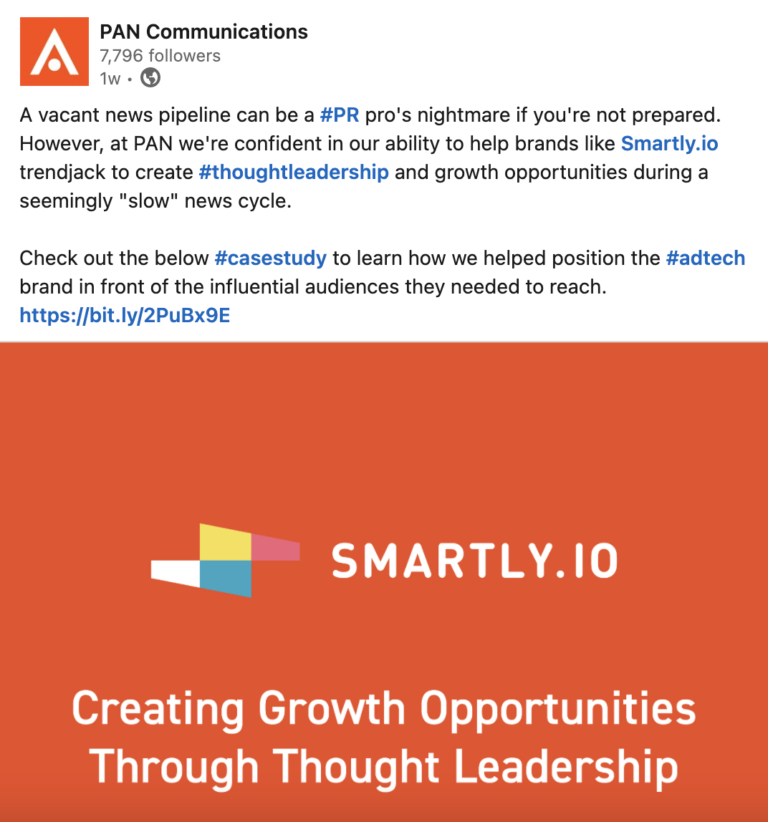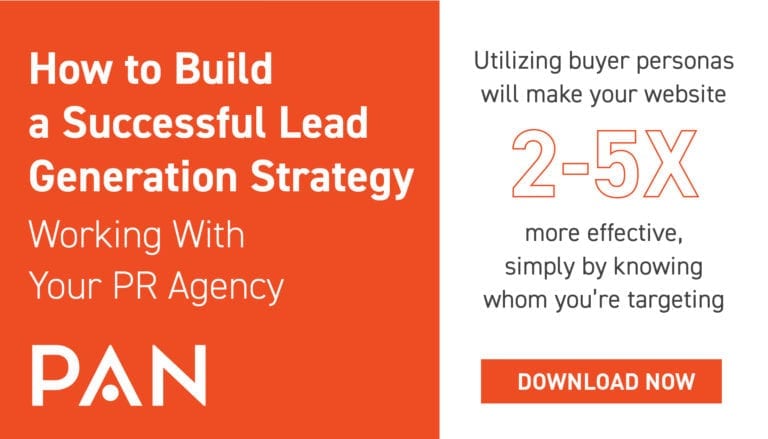If you want to grow the profile of your business, you may look to enlist the support of an integrated marketing and PR agency. The right partner can help you develop an effective strategy, craft a compelling story, use their media contacts to open doors and act as an extension of your brand marketing team.
But, with thousands of agencies to choose from, the process of selecting, briefing and onboarding the right one for you can seem overwhelming, even for the most seasoned marketing or communications pro.
Get it right, and you will begin a fruitful relationship that lasts years. Get it wrong, and you may have wasted months of awareness and brand equity building.
In my career I’ve been involved in hundreds of pitches and since joining PAN two years ago, I’ve been fortunate to see first-hand how global and regional brands are selecting their agency partners. Working with my colleagues in the US, we’ve created this guide to the steps involved in choosing, evaluating and landing your perfect agency partner.

Long-listing: What to Look For
Most companies looking to hire an agency will longlist 5-6 potential partners using everyone’s friends, Google research or word-of-mouth recommendations, and then invite those agencies to share credentials or capabilities. They might also arrange a ‘chemistry meeting’ if time allows, which becomes a bit challenging in the virtual world.
At this stage, some of the key factors to consider include:
- Sector Specialties – Most agencies will specialise in particular sectors and should be able to provide relevant case studies or creds of work they’ve done. Look for an agency that knows your space or has tackled similar communications issues.
- Stage of Growth Expertise – Similarly, selecting an agency that has the right skill set for your stage of growth is important. Mature, listed companies usually need very different approaches to those of early-stage pre-IPO companies with a lower profile. PAN’s NXT Stage Approach provides a strategic guide for growth and is a useful tool for understanding the support you might need at any given stage – for example, considerations if you’re looking to raise your next round.
Learn more about our approach to supporting growth-minded brands.
- Size of Agency – Choosing an agency that has the scale and expertise to deliver is significant, but if you’re a smaller business with a modest budget, consider how important a client you will be to a global giant of an agency. Personalized attention to your account and program will be a critical factor in your evaluation.
- Global Reach – If you’re looking to ‘go global’, make sure you ask about the connections the agency has to international partners in the markets that matter to you. Can they point to success or show a proven model for your specific business and growth opportunity?
- Truly Integrated – Many agencies now offer far more than just traditional PR/earned media support, and this will be vital if you also want digital capabilities – paid social or SEO support for example. But even if you plan to cover those activities elsewhere, there is a huge benefit to working with a partner that understands how their work integrates with the rest of the marketing mix as you seek to unify the teams.
- Creativity – You may be lucky enough to have a constant flow of newsworthy announcements, but most companies are not. Therefore, seeing evidence that the agency can develop creative ideas that can drive proactive stories, or insert you into the news agenda is key.
Learn how our team trendjacked for client Smartly.io during a vacant news cycle.
- Measurement & Analytics – Understanding what success looks like and how it will be quantified is a must. In the past, PR agencies have been criticised for not being able to effectively demonstrate the impact of their work, instead relying on discredited metrics like AVEs (advertising equivalent values). Thankfully, things have moved on and most respectable agencies should be able to demonstrate how they quantify results. For example, we use a proprietary data-driven measurement system called PANoptic.
Once you have reviewed credentials and checked team chemistry, the next stage is usually to issue a formal brief and hold a pitch process, involving a smaller number of shortlisted agencies.
Better Brief = Better responses
If you’ve not done so already, now’s the time to write a tight brief or Request for Proposal (RFP). It should articulate exactly what you’re looking for while also enthusing and inspiring the agency. Quite simply, the better the brief, the better the responses.
There are some excellent, more detailed resources available on how to write a brief, such as this one from ISBA. However, to summarise the essential information that any agency must have:
- Target Audiences – Possibly the most important of all. Agencies will devour as much information as you’re able to provide about your target customers. Providing things like quantitative market research, qualitative focus group data or buyer personas helps ensure agencies design campaigns that will hit home. It is the agency’s job to match those to channels and tactics, but the more customer info you can provide, the better the response you’ll get.
- Objectives – Writing SMART objectives lays a strong foundation for an RFP. Otherwise, how will the agency know when they’re succeeding and how will you hold them to account if they’re not? It’s also helpful to explain your desired Outputs (for example top tier media coverage), Outtakes (for example, audience takeaways or change in attitude as a result of a campaign) and Outcomes (quantifiable impacts such as a rise in sales). An excellent framework to help you plot these is available from media measurement organisation AMEC.
- Budget – It may be tempting to exclude a budget from your brief, but this is usually counterproductive: an agency may pitch ideas that are wildly out of range or underwhelm with a programme that won’t deliver what you need. Even if it’s a wide range, include a budget!
- Competitors – Listing your competitors allows agencies to ensure they don’t have a conflict of interest and helps them analyse their activity and identify white space where there may be room for a fresh communications angle.
Things to Consider at Pitch Stage
At the pitch stage, the shortlisted agencies will send a written response to your brief or present their programme in person. A couple of things to watch out for at this stage:
- Avoid a Disappointing ‘Big Reveal’ with a Tissue Session – Some clients prefer a ‘big reveal’ of the proposed campaign and creative ideas at pitch stage. This often suits agencies too, given pitch preparation often goes right down to the wire. However, an optional ‘tissue session’ can also make great sense. This is an interim meeting – between creds/brief and pitch stage – where an agency gets to road test initial concepts and receive top-line feedback which may result in ideas being jettisoned or improved.
- Beware the ‘Bait and Switch’ – An approach where you only meet the most senior agency executives, who you never hear from again. Senior people are important, but so are the mid-level and more junior staff who will be an important part of your team.
- Who’s Talking Now – In addition to seeing the mid-level and more junior people in the room, make sure you hear from all levels on the team that are present. This is important to hear their level of excitement and confidence leading through the pitch.
- Workshop – Consider this forum if you’d like to see the agencies you are reviewing really act in the moment. These become interactive with your marketing team and help give a sense of what it will be like to brainstorm around tackling some key challenges.
Getting Going: Managing the Relationship
So, you’ve chosen your perfect agency partner, agreed terms and signed the contract. To get the relationship off to a great start in the first 30 days, we recommend:
- Revisit the pitch proposal with a fine-tooth comb
- Kick off with a full-blown agenda so the firm can see all the great assets to build from
- Set up in-take calls with key executives
- Develop the first of many quarterly PR plans that align to demand gen and other critical marketing activities
- Agree on quick wins that can be delivered while the bigger campaigns are being developed
- Set some parameters for working together – perhaps around core operating principles of transparency, respectful ways of working, etc.
- Set up your weekly and monthly meets, but also diarise your first review. At PAN, we work to 90-day review cycles, where we can assess results, and take learnings that will improve the programme further.
- Align your KPIs to the first quarterly plan and lean across the entire marketing department with accountability and impact
- Have fun – life is too short to not enjoy the partnership!




